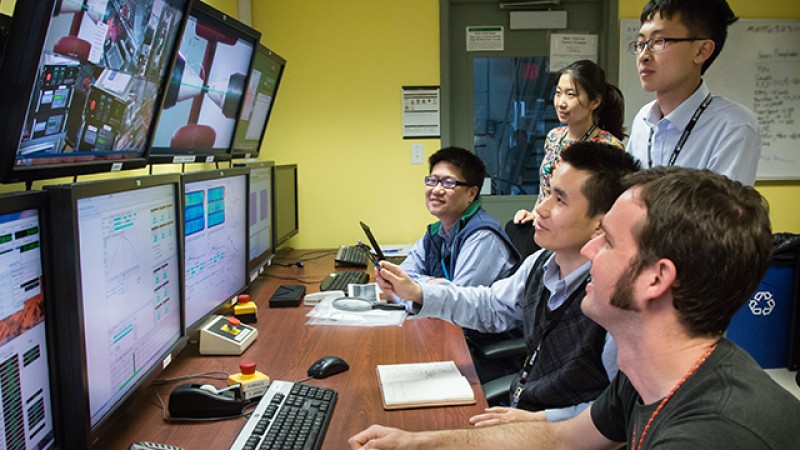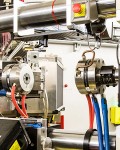Developing advanced metallic materials can be difficult. Ideal materials would be strong and light, but still ductile, or not brittle. As researchers have observed for some time however, the crystalline arrangement of atoms in metals limits the possibilities for material design and causes a tradeoff between strength and ductility.
Yuan Wu from the State Key Laboratory for Advanced Metals and Materials at the University of Science and Technology, Beijing, is looking at metallic glass, a relatively new class of material, to solve this problem. In bulk metallic glass (BMG), the atomic structure is not crystalline, but disordered, making the material strong, but less stiff.
Wu and his team developed a series of BMG composites with large tensile ductility and work-hardening capability by applying the concept of “transformation-induced plasticity” (TRIP) to disordered alloys. The TRIP-reinforced BMG composites consist of spherical austenitic particles dispersed in the BMG matrix that transform to martensite during loading.
The team tested this material at the Spallation Neutron Source’s VULCAN instrument, beam line 7, in April.
“Neutrons are highly penetrating, so conducting our experiment at SNS allows us to see inside of our material,” said Wu. “But more importantly, VULCAN is also especially well-suited to this research because we need in situ conditions. We can introduce tension, compression and high temperatures to our experiment to observe the material deformation and understand the constraints it faces during transformation from austenitic to martensitic.”
“We are working to not only better our understanding of the toughening mechanism in TRIP-BMG composites, but also to build a processing principle for preparing large-sized BMG composites as practical engineering materials,” said Wu.
The reinforced BMG composites have applications in aerospace and biomaterials, explained Wu. “But they’re also beneficial in other places where lighter and stronger materials mean improved performance, like sports materials,” he said.





